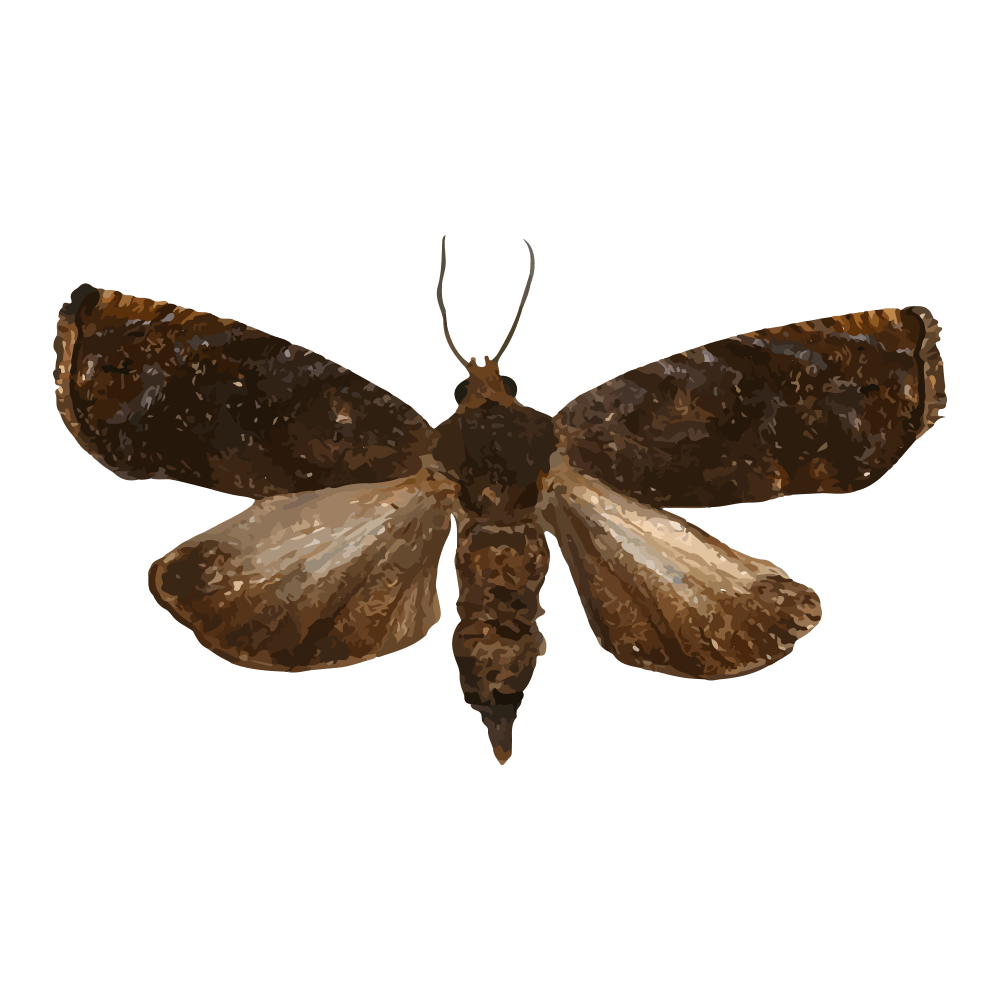


| Latin Name | Cydia trasias |
| Common Name | Walnut Fruit Moth |
| Biology | This pest has 1-2 annual generations. Mature larvae overwinter in cocoons within bark crevices, fallen fruits, or soil. Overwintering adults emerge late April to early May. Eggs are singly laid on young walnut fruits. Hatched larvae bore directly into fruits, feeding on kernels; infested fruits often drop or ripen prematurely. Mature larvae pupate July-August, then emerge to reproduce, with partial second generations. Adults are nocturnal, phototactic (attracted to blacklight), and prefer fresh young fruits for egg-laying. Larvae rarely transfer post-boring, though fallen fruits may disperse larvae. |
| Damage | This pest primarily damages walnuts. |
| Distribution Regions | East Asian Fruit Zone |
| Monitoring | Pheromone lures mimic natural sex pheromones to attract male insects into specialized traps for population monitoring and suppression. As a core IPM component, monitoring enables early risk detection and targeted control. Mass trapping reduces mating opportunities to curb offspring populations. Protocols: ●Use only with matched traps. ●15-45 traps/hectare,replace/replenish every 4-6 weeks. ●Wear gloves or wash hands with detergent when switching lure types. ●Refer to trap-specific hanging instructions. |
| Recommended Traps | Delta Trap, Wing Trap |

ご連絡先情報をご提供ください。精密にマッチしたフェロモンソリューションをご提供します。当社の既存ポートフォリオに最適なソリューションが見つからない場合、合成化学チームが分子構造設計から量産まで一貫してカスタム開発を実施いたします。